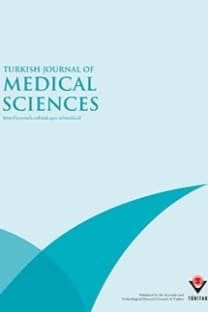Use of the shock index to diagnose acute hypovolemia
Aim : To determine the accuracy of the shock index in the early detection of hemodynamic changes after acute blood loss. Materials and methods: This prospective, observational study was performed on blood donors who were giving 450 mL of blood over 20 min. Vital signs of the volunteers were recorded just before blood donation, and at 1 and 5 min after donation. Shock index was calculated by dividing the heart rate by systolic blood pressure. Results: Fifty healthy donors (mean age 34±9 years) volunteered to participate in the study. Five minute post-donation heart rate (81±12 /min) and diastolic blood pressure (70 ± 10 mmHg) were significantly different from pre-donation values (77 ± 11, 76 ± 15, respectively). Furthermore, 1 and 5 min post-donation systolic blood pressure values (106 ± 14, 108 ± 12 mmHg, respectively) were significantly different from pre-donation values (120 ± 20 mmHg) (P = 0.0001). The shock index, at both 1 and 5 min after blood donation (0.75 ± 0.14, 0.76 ± 0.15), was significantly higher than pre-donation values (0.66 ± 0.15) (P = 0.001). Conclusion: After a small amount of acute blood loss, the shock index and systolic blood pressure are better indicators of acute blood loss than heart rate.
Use of the shock index to diagnose acute hypovolemia
Aim : To determine the accuracy of the shock index in the early detection of hemodynamic changes after acute blood loss. Materials and methods: This prospective, observational study was performed on blood donors who were giving 450 mL of blood over 20 min. Vital signs of the volunteers were recorded just before blood donation, and at 1 and 5 min after donation. Shock index was calculated by dividing the heart rate by systolic blood pressure. Results: Fifty healthy donors (mean age 34±9 years) volunteered to participate in the study. Five minute post-donation heart rate (81±12 /min) and diastolic blood pressure (70 ± 10 mmHg) were significantly different from pre-donation values (77 ± 11, 76 ± 15, respectively). Furthermore, 1 and 5 min post-donation systolic blood pressure values (106 ± 14, 108 ± 12 mmHg, respectively) were significantly different from pre-donation values (120 ± 20 mmHg) (P = 0.0001). The shock index, at both 1 and 5 min after blood donation (0.75 ± 0.14, 0.76 ± 0.15), was significantly higher than pre-donation values (0.66 ± 0.15) (P = 0.001). Conclusion: After a small amount of acute blood loss, the shock index and systolic blood pressure are better indicators of acute blood loss than heart rate.
